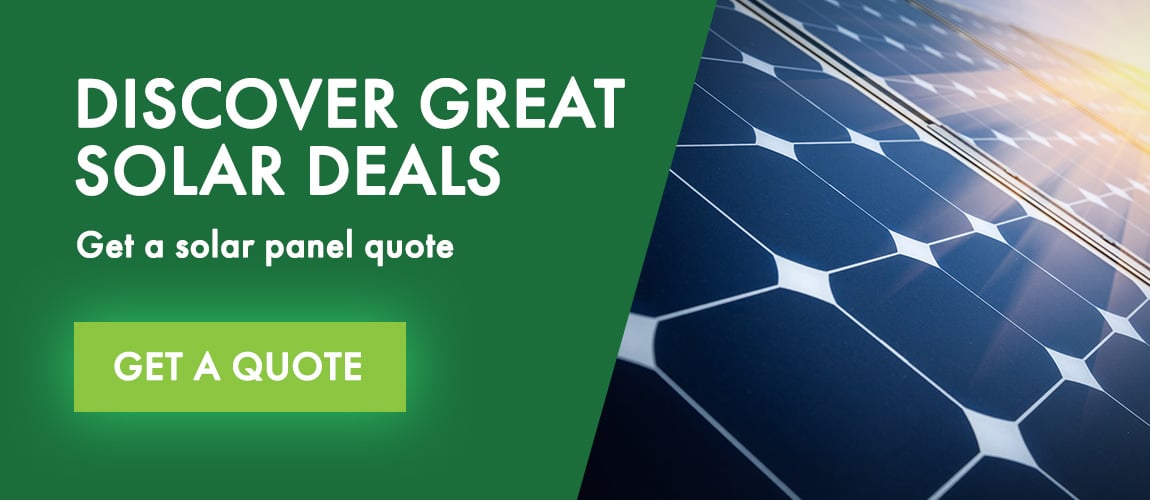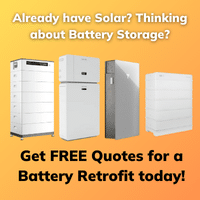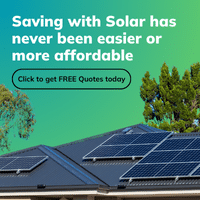Renewable energy is sustainable as it originates from sources that are inexhaustible (unlike fossil fuels). Sources of renewable energy include wind, solar, biomass, geothermal and hydro, all of which occur naturally.

Renewable energy, generally speaking, is clean energy and non-polluting. Many forms do not emit any greenhouse gases or toxic waste in the process of producing electricity. It is a sustainable energy source that is reliable for the long-term. Renewable energy is cost-effective and efficient. The challenge of climate change compels many nations to set a renewable energy target.
Renewable Energy Target (RET)
Increasingly, governments around the world are turning to renewable energy to end our dependence on fossil fuels.
In 2001, the Australian Government introduced a Mandatory Renewable Energy Target (MRET) program with the goal of increasing uptake of renewable energy in Australia’s electricity supply. By 2007, the Government committed to ensuring that 20 per cent of Australia’s electricity supply comes from renewable energy sources by 2020.
In December 2008, the Australian Government and the Council of Australian Governments (COAG) released for public consultation draft legislation for an expanded Renewable Energy Target (RET). This will bring the MRET and existing and proposed state and territory targets into a single national RET scheme.
February 2010 saw the Rudd Government announce proposals that from 1 January 2011, the RET will include two parts: the Small-scale Renewable Energy Scheme (SRES) and the Large-scale Renewable Energy Target (LRET).
The SRES applies to small-scale technologies such as residential solar power and solar hot water systems and is supported by the Renewable Energy Certificate (REC) system. The SRES is currently without a cap.
The LRET covers large-scale renewable energy projects such as wind and solar farms and includes a target of 41,000 gigawatt-hours of renewables-based generation in that year.
After last minute amendments, legislation for the enhanced Renewable Energy Target (eRET), passed on June 24, 2010.
In 2015, new legislation was passed, reducing the LRET from 41,000 GWh to 33,000 GWh by 2020.
Benefits of the Renewable Energy Target
The benefits of the RET aside from cleaning up Australia’s future energy mix are many – including jobs and billions of dollars of investment.
Homes, businesses, community groups and schools are being encouraged to install solar power through various incentives such as grants, rebates and feed in tariffs that pay system owners for the electricity they produce.
Cost of the Renewable Energy Target
The cost of the RET’s overall estimate is approximately 3.5c to 5c per kWh. However, the Small-scale Renewable Energy Scheme (SRES), a component of the RET will have zero net cost impact on household power bills by 2015/16.
Alternatives to fossil fuel and system components
Click on the following links to jump down to the relevant part of this page about renewable energy technologies:
- Solar energy
- Wind energy
- Micro hydro systems
- Hybrid systems
- Green power
- Geothermal energy
- Fuel cells
- Nuclear energy
- Solar panels
- Batteries
- Solar Hot Water
- Solar Pumping
- Inverters
- Solar regulators/ controllers
- Battery chargers
Solar power
Solar power is clean green electricity sourced from sunlight. Or in some cases, from heat from the sun. Installing solar power systems in a residential setting generally means setting up a solar photovoltaic or a solar thermal system on the roof.
Definition of photovoltaic: Photo = “light” and photons = energy particles coming from sunlight; voltaic = producing a voltage or volts. Abbreviation = PV
Solar energy is a renewable free source of energy that is sustainable and totally inexhaustible, unlike fossil fuels that are finite. It is also a non-polluting source of energy and it does not emit any greenhouse gases when producing electricity.
Solar electricity can supplement your entire or partial energy consumption. Using solar power means reducing your energy bills and saving money. Low maintenance and unobtrusive, installing solar panels adds value to your home.
For more solar energy information
Wind power
Wind power involves converting wind energy into electricity by using wind turbines. The wind comes from atmospheric changes. These include changes in temperature and pressure which make the air move around the surface of the earth. A wind turbine captures the wind to produce energy.
Wind power is a clean energy source that can be relied on for the long-term future. A wind turbine creates reliable, cost-effective, pollution free energy. It is affordable, clean and sustainable. One wind turbine can be sufficient to generate enough electrical energy for a household, assuming the location is suitable.
Because it is a renewable resource which is non-polluting and renewable, wind turbines create power without using fossil fuels, without producing greenhouse gases or radioactive or toxic waste. Wind power is one of the best ways to combat global warming.
For more wind power information
Micro hydro systems
Micro hydro systems convert the flow of water into electrical energy. A turbine can be fully immersed in water. The flowing water rotates the turbine’s blades. The amount of energy created depends on the amount of water flowing on the turbine as well as the size of the turbine.
Micro hydro systems are generally used as stand alone power systems which are not connected to the grid. They are recommended in remote areas where there is a continuous supply of water.
Approximately 10% of Australia’s energy comes from this source. Australia’s biggest hydro system is in the Snowy Mountains. It is a cheap, reliable and non-polluting source of energy.
For more water energy information
Hybrid systems
Hybrid systems consist of combining different types of energy production systems into a single power supply system. The most common type of hybrid system is combining a solar system with a wind generator; however, hybrid energy systems can integrate solar panels, diesel generator, batteries, and an inverter into the same system.
Solar panels create electricity from sunlight. This electricity is then stored in batteries. The inverter converts the AC electricity into a DC current. The diesel generator automatically cuts in when the batteries are low. The generator when running supplies the load and charges the batteries. The key is to find the right mix of solar array, diesel generator and battery capacity.
Green power
Switching to green power means that electricity providers make it possible for customers to purchase green power from their power company if they pay extra for it. What this means is that instead of using electricity which comes from many non-renewable sources, the retailer ensures that the equivalent electricity used in your home feeds to the grid via a renewable source. This could be solar arrays or wind turbines. However, in the past there has been instances of fraud involved in such schemes.
Geothermal energy
Geothermal energy is power derived from the heat from the Earth. This can be sources such as the shallow ground to hot water and hot rock found a few kilometers beneath the Earth’s surface. It may go down even deeper to the extremely high temperatures of underground molten rock called magma. We usually only see this when it erupts to the surface in the form of lava.
Fuel cells
Fuel cells create energy through chemical reactions. A fuel cell is an electrochemical cell which captures the electrical energy of a chemical reaction between fuels. It is an electrochemical conversion device which converts the chemical energy of fuel (i.e. hydrogen and oxygen) into water; and which produces electricity and hot air in the same process. Fuel cells have no moving parts and do not involve combustion or noise pollution.
A fuel cell is similar to a battery but does not need recharging. A battery recharges by using electricity which is then stored in a closed system. In comparison, fuel cell uses an external supply of fuel which needs to be continuously replenished. Fuel cells are not commercially available yet, and remain very expensive. They are used as power sources in remote areas. NASA uses fuel cells on space shuttles; they are also used for military applications, and in large public parks.
Fuel cells cannot store energy like batteries. Even if the energy from fuel cells goes into storage, their electrical efficiency is not nearly as high as a battery’s efficiency which also happens to be a much cheaper option.
… more fuel cell information
Nuclear energy
Nuclear energy cannot really be termed renewable, since there is only a finite amount of uranium on this planet. The reactors also produce a by-product other than the power they generate. This is toxic harmful waste that must be stored indefinitely.
Nuclear energy comes from a nuclear reaction when the splitting or fusion of atoms occurs. Fusion energy is not available on an industrial scale yet. The splitting of atoms is fission. A typical example of fission energy is when an atomic nucleus of a high mass atom (such as uranium) splits into fragments inside a nuclear power reactor. This split then releases several hundred million electron volts of energy. The energy from the nuclear fission yields an amount of energy which is a million times greater than that from a chemical reaction.
Nuclear reactors emit no greenhouse gases, and are the closest thing to a non polluting energy source apart from renewable energy. Modern reactors are safer, and are more economic than what they used to be. The main issues with nuclear energy are the safety standards of a nuclear power plant and the storage of its radioactive waste. It is still a debated issue about whether or not nuclear power is a good alternative to limit our dependence on imported oil. France is the world leader in nuclear energy production, relying on nuclear power for 80% of its electricity.
For more nuclear power information
Renewable energy system components
While renewable energy is plentiful, most of the environmental impact is related to the production of equipment to harness the energy. This leads to the concept of the energy payback time. That is the amount of time it takes to repay the energy and resources gone into creating something such as a solar panel. This time is usually quite short.
In the case of a solar panel, the energy payback time is around 1.5 years. Given a solar panel has a life of 25 years, this is quite economical ecologically speaking.
The following are descriptions of common components of solar power systems.
Solar panels
Solar panels, also known as photovoltaic modules, consist of a series of solar cells that convert light from the sun into DC electricity.
A solar panel is a rugged piece of equipment, built to last decades of exposure to harsh climate conditions. These could include freezing to searing temperatures, storms and high wind.
Solar hot water
30% of total greenhouse gases households produce is due to water heating. Solar water heaters can dramatically reduce energy bills without any environmental impacts. Installing solar hot water also reduces our dependency on fossil fuels. The technology for solar water heaters is entirely different to a photovoltaic grid connect system. For example, solar heaters use a flat plate with collector panels or evacuated tubes to absorb the heat from sunlight and then raise the temperature of the water.
For more solar hot water information
Solar pumping
Solar powered water bore pumps provide an ideal water delivery solution in areas where mains electricity is not easily accessible. For this reason, they find widely use on farms and outback stations in Australia to supply bore water to livestock.
For more solar pumping information
Batteries
Batteries are devices that convert chemical energy into electrical energy. They are classified according to their application and the manner of construction. The main applications are in cars, boats and deep-cycle.
Deep cycle batteries can charge and discharge repetitively. Deep cycle batteries are best for solar PV systems.
The main construction types of batteries are flooded (wet), gel, AGM (dry) and lithium-ion.
Dry or wet / flooded refers to whether or not the electrolyte is liquid. A dry cell means that the electrolyte is a solid powder electrolyte. A wet cell means that the electrolyte is liquid and can flow freely in within the cell casing. Dry cell batteries find use in flashlights, toys, radios, laptops and mobile phones.
Batteries were usually only in stand alone power systems, such as a rooftop solar power system or wind turbine system. However, stand alone power systems can have a design to run without battery backup.
In a stand alone power system, the house doesn’t connect to the electricity grid (the distribution of electricity through high-tension cables). It is “off” grid. This means that the stand alone power system is the sole source of energy available to the home. In a stand alone solar power system, the energy sourced during the day stores in a battery bank for use at night. Sometimes batteries integrate into grid connect systems as a backup.
Increasingly battery systems are part of grid connect solar power systems. The new generation of lithium-ion based batteries have decreased in price dramatically.
For more solar battery storage system
Power and solar inverters
A solar inverter is a device to transform direct current electricity (DC) from solar panels (AC). A power inverter does the same, but the source is a battery.
AC current is the standard current that makes all household appliances work. The inverter converts the DC power of the battery bank into 240 volts, 50 Hz AC. There are two types of inverters: the Sine Wave Inverter and the Modified Sine Wave Inverter. A Modified Sine Wave Inverter can adequately power some household appliances and power tools. It is cheaper, but presents certain compromises with some loads such as computers, microwave ovens, laser printers, clocks and cordless tool chargers.
Virtually all low-cost inverters are “Modified Sine Wave”. They are usually about 70% efficient, so expect some significant power losses if you are using a Modified Sine Wave Inverter in your system. A Sine Wave Inverter’s design is to replicate and even improve the quality of electricity supplied by utility companies. To operate higher-end electronic equipment, we recommend a sine wave inverter.
Efficiency now reaches up to about 94% and the electricity from these devices is of a higher quality than grid power almost anywhere in the world. A high quality inverter usually has an auto-start system, tweaking ability and a high quality heavy-duty power transformer.
For more power inverter information
Solar regulators/ controllers
A regulator is an electronic device which controls the voltage of the charging source. Regulators stop the batteries from overcharging. When the batteries fully charge, the regulator halts the flow of power from the solar panels to the batteries. Additionally, a regulator stops any power flow from the batteries at night. The controller also ensures that the batteries charge at the correct voltage. In order to calculate the Amp rating of a controller you must follow this simple equation:
Amps x Volts = Watts.
So, if you have a 175W panel at 24 volts the calculation is:
Amps x 175 = 24
then the regulator should be at 175/ 24= 7.3 Amps.
For more regulator information
Battery chargers
Battery chargers are used in conjunction with the generator or main power to provide DC power to recharge batteries. There are many types of battery chargers, including solar chargers. They primarily vary in the amount of time they take to charge batteries and how they take care of the batteries while charging them.
For more battery charger information









































